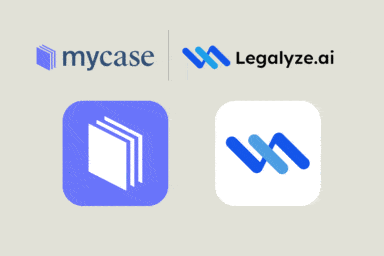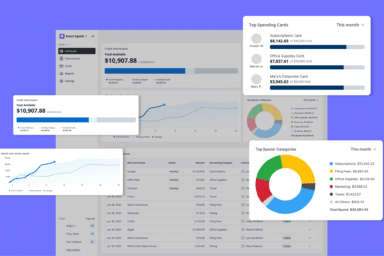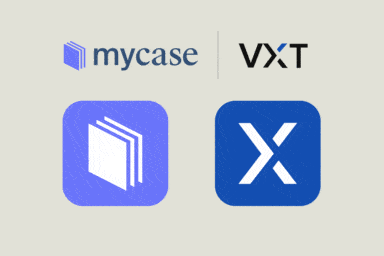How to Choose Legal Software for Your Law Firm That Will Ensure Business Continuity
Jun 8, 2021
| 5 min readAs we begin to emerge from the pandemic, one thing is indisputable: the past year was both unpredictable and unprecedented. The effects of the pandemic dramatically affected the practice of law and because we’re still in the midst of that change, it’s difficult to fully appreciate the overall impact. As a result, you’re no doubt wondering about the future of your law firm and how to set it up for success in the “new normal.”
One way to achieve this goal is to take steps to lay the foundation for business continuity no matter what happens. By future-proofing your business you ensure that that your firm is able to rapidly pivot, adapt to unexpected disruptions, and thrive in the face of uncertainty. One of the top steps you can take to prepare your firm for the unknown is to put in place the remote, cloud-based technology and processes that will enable law firm employees to handle all essential functions remotely if and when that’s needed.
If your law firm hasn’t already invested in cloud-based legal software, there’s no better time than the present. And if you’re not sure how to go about choosing legal software for your law firm, then you’re in the right place! Below you’ll find a roadmap for selecting cloud-based software that works the way your firm needs it to.
Research the provider
When researching your options prior to choosing a cloud-based legal software system for your firm, you’ll need to learn about, and thoroughly vet, the provider—and any integration partners—before signing up for a trial.
Determine how long the company has been in existence, where it is located and how your law firm’s data will be handled by the company. Issues to consider include knowing who will have access to the data, how and when it will be backed up, how you can export your firm’s data should you need to, and in what format.
Learn about the software
You’ll also need to thoroughly research the features offered by each program since different software platforms have different strengths and varying approaches to software development. Some build most features into the software, some offer many features through integrations with other software tools, and others take a blended approach with some built-in features and some integrations.
Common legal software capabilities include:
- Calendaring
- Attorney time tracking
- Client-Intake
- A law firm CRM (client relationship management) system
- Financial reporting and accounting
Carefully consider whether your firm needs a comprehensive software platform that has most of the features built into it or if your firm would prefer to add features to the primary system by integrating a number of different software tools into the program. Then ensure that you fully understand the available features. Feature sets are key when choosing software for your firm, which is why it’s important to identify the top problems you’re trying to solve prior to researching your options. Once you’ve done so, look for a platform that excels at addressing those particular pain points.
Understand the pricing
Which leads me to the next consideration when choosing a legal software: price. All software has a base price. Some companies offer a full-fledged feature set with many features built in for a single monthly cost. Others offer tiered pricing, with increasingly more features included in the higher tiers.
For companies that offer tiered pricing, integrations are often included in the higher tiers, and depending on the company’s pricing scheme and how integrations are set up and priced, you may have to pay subscription fees for the integration tools. You may also be required to pay a higher subscription cost for the practice management software in order to access to the software integrations or additional features. So make sure you have a full understanding of what’s included before committing to a platform.
Take the software for a test drive
Next, it’s vital that your firm take advantage of any free trials or demos offered. Functionality and user interfaces vary greatly, and the only way to determine which software tool will work best for your firm is to take it for a test drive. That’s why it’s important for key stakeholders to test drive the software.
Your end goal when testing out software is to ensure that it meets your firm’s needs. The best way to do this is to get input from other team members who will be using it. Their opinion is important because if the majority of your team isn’t comfortable with the software, then they won’t use it; you’ll need their buy in and cooperation when implementing the software in your firm.
Once you ensure that everyone is on board with the concept and is willing to use the software, you’ll be well on your way to reaping the benefits legal software in the cloud, not the least of which is ensuring long term business resiliency.
Related: [Blog Post] The Case for Law Practice Management Software
So as you take steps to ensure your law firm is ready for whatever the second half of 2021 may bring, having a business continuity plan that includes cloud-based legal software that will make it possible for your firm to thrive in the “new normal.” The bottom line: there’s no better time than now to replace your firm’s outdated and impractical IT infrastructure with more modern and efficient cloud-based legal software.
For even more advice on choosing legal software and setting your firm up for success by moving to the cloud, download this FREE guide today: Moving Your Law Practice to the Cloud – How to Transition to Cloud-based Legal Software.


